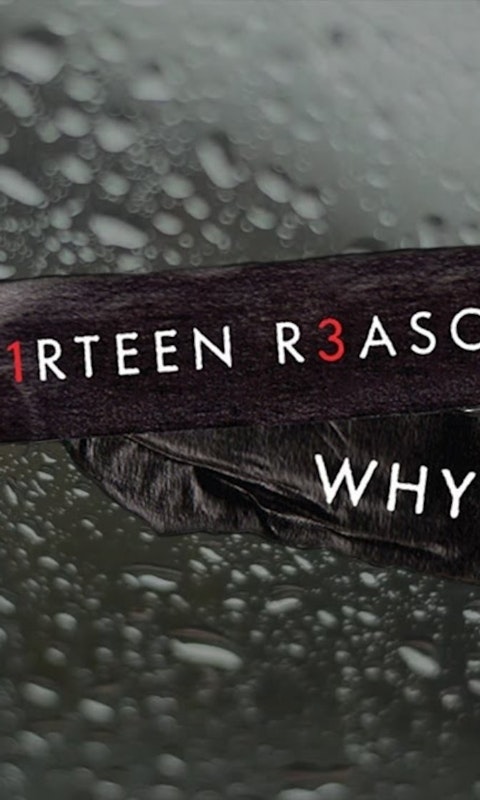
 Support us
Support us

Our Director, Jaelea Skehan, shares her opinion with the Sydney Morning Herald today about the fictional portrayal of suicide and mental illness, and the role of streaming media services such as Netflix and programs like 13 Reasons Why.
This piece follows her article, Six Reasons Why I’m concerned about a TV series, issued when the series first aired in Australia earlier in the year.
Opinion – Sydney Morning Herald.
This week, the fictional portrayal of suicide and mental illness has hit the media again. In particular the role of streaming services such as Netflix and programs like 13 Reasons Why.
It's the age of global media and consumer choice – any program at any time of the day. But what this freedom also brings is the potential to bypass any existing standards or regulation that a country has for managing sensitive content that can impact on communities.
Australia has an active strategy of engaging with news and entertainment media about the way it reports and portrays suicide and mental illness under the Mindframe Initiative – a body of work managed by the Hunter Institute of Mental Health that has been highlighted as international best practice by the World Health Organization.
The success of the strategy has been the ongoing dialogue it has created between the mental health sector and the media. In particular, coming to a shared agreement about how we, as a country, will translate and apply the evidence we have about the impact of portraying suicide and mental illness in certain ways.
While suicide is an issue that must be talked about as a community, it's important to know about types of portrayals that might expose community members to further risk and what might be reasonably done to mitigate those risks, without shutting down the conversation.
The hard reality is that while many people can watch any content they like with limited impacts, there remains a strong association between media presentations of suicide and increases in suicidal behaviour – in news and in film and television drama. The risk is increased when a program details or shows the method of suicide and where it glorifies the death, or the person who died, in some way.
Like many people in the suicide prevention sector globally, I have already shared my professional concerns about the approach taken in the Netflix Series 13 Reasons Why. There is absolutely no doubt that this program opened up more conversations globally than almost any other event or piece of media. But it also divided people perhaps more than any other show.
Some, including myself, believed it was potentially triggering and sending all the wrong messages about suicide. While others feel it is helpful to be shown the “hard realities” of suicide. Certainly a point of view put forward by the producers.
But regardless of what you may have personally thought about the program, Netflix’s ability as a streaming service to ‘bypass’ a country’s existing standards and safety measures presents a particular challenge that must be addressed as a priority.
The reality is, that 13 Reasons Why would not have been shown in its entirety on Australian television without editing, based on our current codes of practice and general standards of agreed practice.
Firstly, it is highly unlikely that the suicide scene depicted in the final episode would ever be shown on Australian television. We know from sound research that detailed descriptions and portrayals of suicide have been associated with increased distress and increased risk of suicide following those portrayals. The current Broadcasting Codes of Practice would have prohibited such graphic portrayals regardless of the classification.
Secondly, it is highly likely that the channel broadcasting the series would have sought advice and posted a warning at the start of the program to alert people to the content being explored. It would have also added help-seeking information at the end of each episode, which we know from Australian research, increases the number of people reaching out to those services when media add helplines and other services to their content.
Perhaps the minimum that can be done, and the norm in Australia.
Finally, I’d like to think that if the program was produced here, rather than off-shore, that producers would have taken on board the advice given, and that the portrayal may have been more truthful, more authentic and less hopeless.
While Initiatives like Mindframe have shown that partnerships, rather than punitive regulation, can be a successful way forward in developing agreed standards on content, it also relies on all media – national and global – coming to the table and agreeing to be part of the solution.
As the nature of the way we consume media changes, it is imperative that we have everyone willing to play their part. The last thing we want is to overregulate the media, but we need to ensure that what is produced and portrayed is safe.
As we grapple with how we support the broader community to communicate these issues, it has been important to see social media providers in Australia like Facebook come to the table to be part of the solution.
While there has been an early promising indication from Netflix in Australia, who have already met once with Mindframe and others in the mental health sector, what we need is for all of our streaming services to actively come to the table and join the conversation to become partners in an ongoing solution. Australia could lead the way internationally in this new media world.
There are a range of services available for people experiencing personal crisis - go to our Need help page page now.
See also:
Published: 29 August 2017